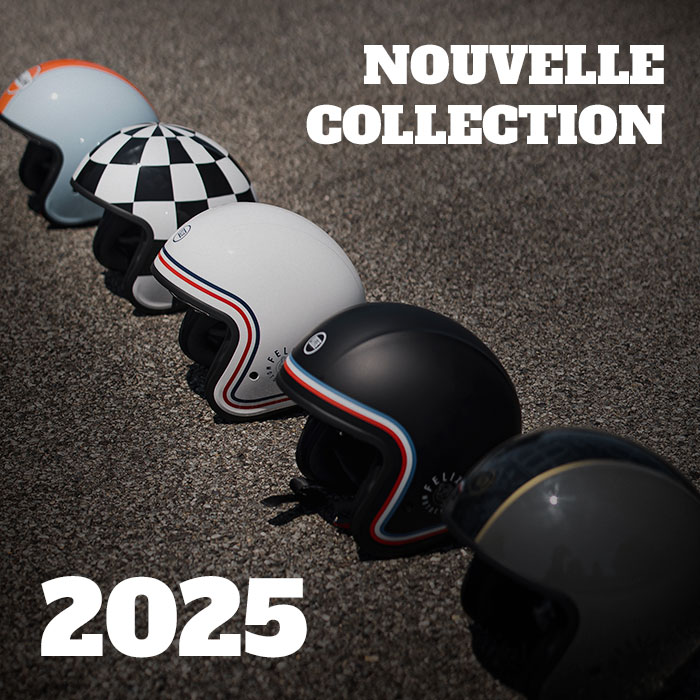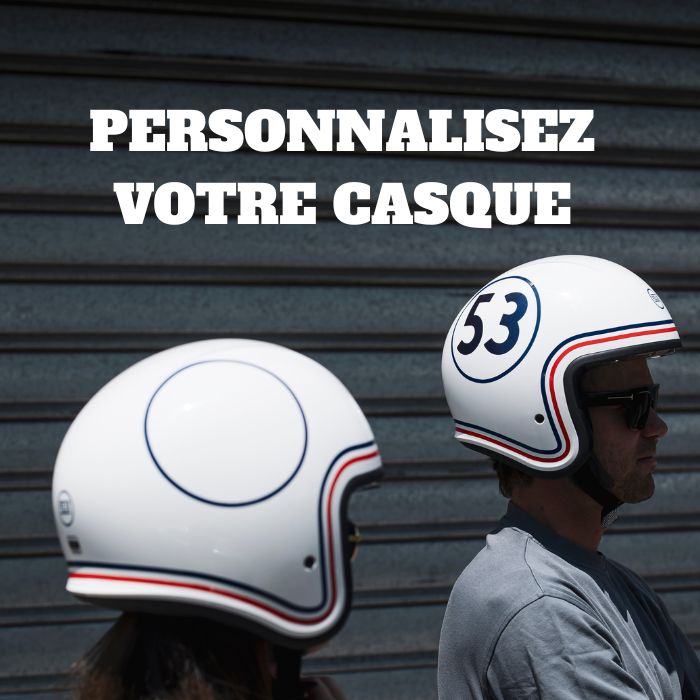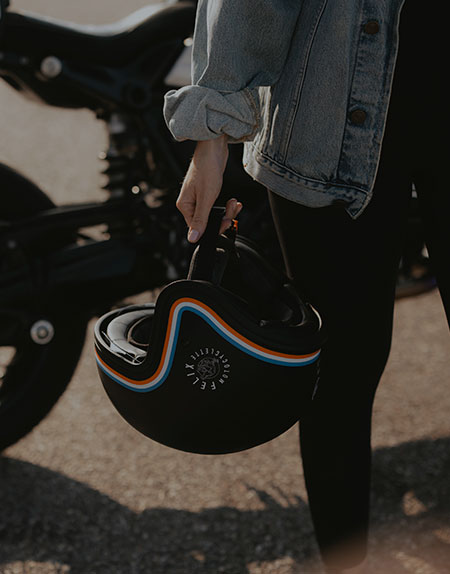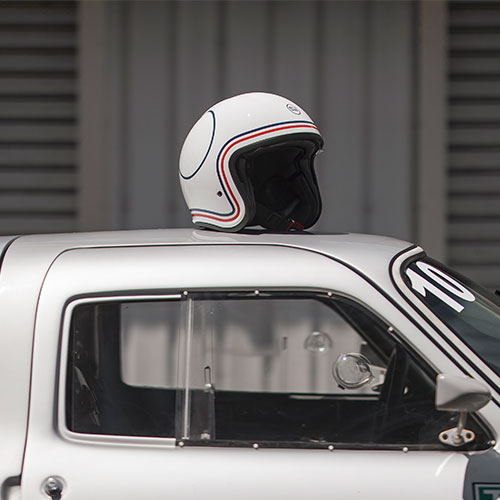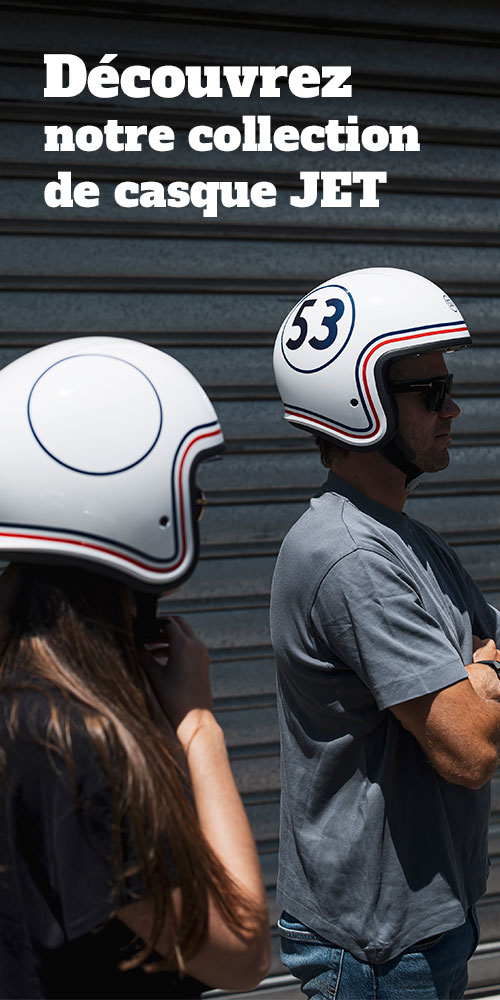The vintage helmet is increasingly popular among riders seeking authenticity. Inspired by models from the 1960s to 1980s, it stands out with its minimalist design, retro finishes, and clean lines. But beneath its classic appearance, a vintage helmet must meet modern standards of safety and comfort. Before making your choice, here are five key things to know to avoid mistakes.
1. Check the certification, even for retro helmets
Style should never come before safety. To be legally used on the road, a helmet must carry the European standard ECE 22.05 or 22.06 (the most recent). Some vintage-looking helmets, especially those sold on foreign platforms, have no certification or display non-recognized standards (DOT, SNELL). Others are purely decorative reproductions, not designed for riding.
An uncertified helmet exposes you to point deductions, fines, and, most importantly, no protection in case of an accident. If you choose a vintage open-face helmet, make sure it is certified and that its internal structure is properly designed to absorb impacts.
2. Vintage shapes don’t provide all levels of protection
Most vintage helmets are open-face (jet style), meaning they lack chin protection. This offers an urban look, a sense of freedom, and good ventilation but comes at the cost of reduced facial and jaw protection. In a frontal fall, the impact can be direct with no cushioning.
It’s essential to match the helmet to your use. For strictly urban, low-speed riding, a certified open-face helmet may suffice. However, for road or highway trips, it’s better to consider a full-face vintage-style model that combines retro aesthetics with full safety.
3. Materials make all the difference
A well-designed vintage helmet doesn’t just replicate an old design; it incorporates modern materials. It’s important to distinguish between helmets made of thermoplastics (ABS, polycarbonate) and those made from fiberglass, tri-composite fiber, or carbon. The latter are often lighter, more impact-resistant, and more durable.
Interior padding has also evolved: today, you’ll find memory foam that is removable and washable, with coverings in leather or technical fabrics. A quality vintage helmet thus combines authentic appearance with current technology, offering a good balance of style, comfort, and performance.
4. Customization can affect certification
Some users want to customize their vintage helmets with paint, stickers, rivets, or non-original tinted visors. It’s important to know that any modification not approved by the manufacturer can void the certification. Poorly applied paint can weaken the shell, misplaced stickers can cover deformation zones, and non-certified dark visors can impair night vision.
If you wish to personalize your helmet, choose models designed for this purpose by brands offering customization options within regulations. It’s possible to have a unique helmet while maintaining safety standards.
5. Maintenance is essential to preserve both style and safety
Vintage helmets are often more susceptible to wear: leather finishes, visible stitching, glossy shells… To preserve their appearance, it’s important to use appropriate cleaning products, avoid prolonged sun exposure (which can cause fading), and store the helmet in a protective cover.
From a safety perspective, the interior foam compresses over time and can reduce the helmet’s fit. A helmet that’s too loose becomes ineffective during impact. It’s therefore recommended to regularly check the condition of the padding and fastenings, and to replace the helmet every 4 to 5 years, even if it still looks good.
Conclusion: A vintage helmet, yes — but not at just any cost
A vintage helmet is a legitimate choice—provided it meets safety standards and best practices. Today, you can find models that combine retro design with modern technology without compromising protection. Before buying, always check the certification, material type, level of protection, and maintenance requirements. A helmet is safety gear, not just a fashion accessory.
 FULL FACE
FULL FACE
 JET
JET
 PROMOTIONS
PROMOTIONS
 NEW COLLECTION
NEW COLLECTION


